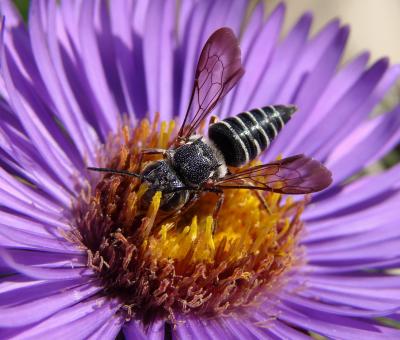 Other native bee populations in the Northeast are holding up better than bumblebees (genus Bombus), a new paper in the Proceedings of the National Academy of Sciences reports.
Other native bee populations in the Northeast are holding up better than bumblebees (genus Bombus), a new paper in the Proceedings of the National Academy of Sciences reports.
The study looked at over 30,000 museum specimens spanning 140 years. It found that species richness of bees in the region declined weakly overall. However, three species declined sharply, all the the genus Bombus. The study also showed that there were significant shifts in species abundance over time, with 29 percent of the species decreasing and 27 percent increasing.
Unfortunately, the bees that showed the greatest increase were exotic species. Also doing well were southern species on the northern edge of their range.
In a EurekAlert press release, lead author Ignasi Bartomeus is quoted as saying, “Environmental change affects species differentially, creating ‘losers’ that decline with increased human activity but also ‘winners’ that thrive in human-altered environments.”
The scientist found that the more vulnerable species tend to have larger body sizes, restricted diets, and shorter flight seasons.
Read the EurekAlert press release here.
Read the PNAS abstract here. (Access to the paper requires a subscription or a fee.)
Photo: The cleptoparasitic bee Coelioxys sayiis is widely distributed in North America and parasitizes Megachile leaf-cutter bees. This photo was taken in Prospect Park in Brooklyn, N.Y. by John Ascher, of the American Museum of Natural History. Used courtesy of AMNH.
